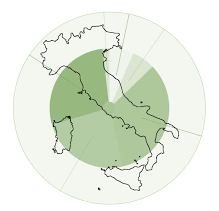Back pain is a major cause of disability globally, significantly affecting the daily lives of people who suffer from it. According to data from a systematic review, back pain is responsible for a high number of doctor visits and absences from work. Despite its prevalence, the assessment of disability caused by this condition is not uniform, varying by geographic region, treatment modalities and local health care systems. This studio, posted at The Lancet Rheumatology by a group of Global Burden of Disease researchers, aims to explore differences in the burdens of disability associated with low back pain, analyzing how various factors contribute to the extent of disability and access to treatment, with the goal of providing insights to improve treatment effectiveness and reduce disparities.
Back Pain and Disability: A Global Problem.
Back pain, both with and without radiating leg pain, is one of the most common conditions in the world. Its incidence is not only high, but its chronicization can lead to lasting disability that impairs quality of life. This disorder manifests in several forms: acute low back pain, chronic low back pain, and sciatica, which can result from multiple causes, including poor posture, injury, degenerative disease, or malformation.
Estimates of disability weights related to back pain are determined by epidemiological and clinical studies that seek to measure the impact of pain on people’s daily lives. However, the methodology used to calculate these weights, which reflect how much the condition reduces function compared to a healthy person, can vary widely. Research has revealed that disability weights for low back pain can differ significantly across regions, health care systems and treatment policies adopted.
Mode of Treatment and Results of the Review
A total of 144 Cochrane reviews and 210 clinical trials were included in the systematic review, providing a broad overview of available treatments for low back pain. The most common treatments include the use of non-opioid analgesics, physiotherapeutic interventions, surgery, and psychological approaches such as cognitive-behavioral therapy. The data show that combined treatments, which include psychological and physical interventions, are found to have the highest effect in reducing disability, with a standardized reduction in back pain of -0.460, followed by surgery with -0.366. However, treatments do not always lead to a complete resolution of disability, and in some cases, such as in the case of surgery, there may be complications that contribute to increasing disability burdens.
Geographic Disparities in Disability Weights.
An interesting aspect that emerged from the review is the difference in disability weights according to geographic region. Global estimates of disability weights for back pain show an average of 0.169 for back pain with radiating leg pain and 0.103 for back pain without radiating leg pain. However, these values vary widely from country to country. The highest estimates were in countries with less developed health systems or limited access to effective treatments. For example, in the Central African Republic, the disability weight for back pain is 0.118, while in Iceland it is significantly lower at 0.092. These differences highlight how access to quality treatments can profoundly influence the impact of the disease on people.
Why Are Inequalities Important?
These disparities in disability weights raise important questions about the distribution of health care resources and how patients in different regions are treated for back pain. In countries with good health care systems and easy access to treatment, pain management and rehabilitation are more effective, and thus disability is generally lower. In contrast, in regions with low accessibility or those with limited health care resources, back pain can lead to chronic disability, resulting in economic and social problems.
This disparity affects not only access to medical treatment, but also access to preventive care, education about posture and proper movement, and the availability of psychological support programs for pain management. Health policies that promote the integration of these interventions and improve access to health services can significantly reduce the burdens of disability and improve the quality of life of people with low back pain.
The Importance of Optimizing Treatments.
Another crucial aspect concerns the optimization of treatments to reduce disability. While the use of non-opioid analgesics is widespread, accounting for about 30% of treatments for back pain without radiating pain and 33% for back pain with radiating pain, the effectiveness of these drugs is often limited. In addition, the monotherapy approach is not always sufficient to treat the underlying causes of back pain. Therefore, the optimal treatment should be a combination of different therapeutic modalities, including not only medications but also physical and psychological interventions. This multidisciplinary approach could significantly reduce disability burdens, allowing people to recover more quickly and with less impact on their daily activities.
Conclusions
Low back pain is one of the leading causes of disability worldwide, but estimates of disability related to this condition vary significantly by region and treatment. Differences in disability weights highlight disparities in access to treatment and the effectiveness of health interventions, highlighting the need for change in global health policies. Optimizing treatments, adopting an integrated approach combining medication, physiotherapy, and psychological support, and reducing inequalities in access to care are key steps to improve the management of low back pain and reduce the burden of disability globally.
Investing in an equitable health care system and improved access to care is essential not only to reduce the disability burdens associated with back pain, but also to improve the quality of life for people with the condition worldwide.

